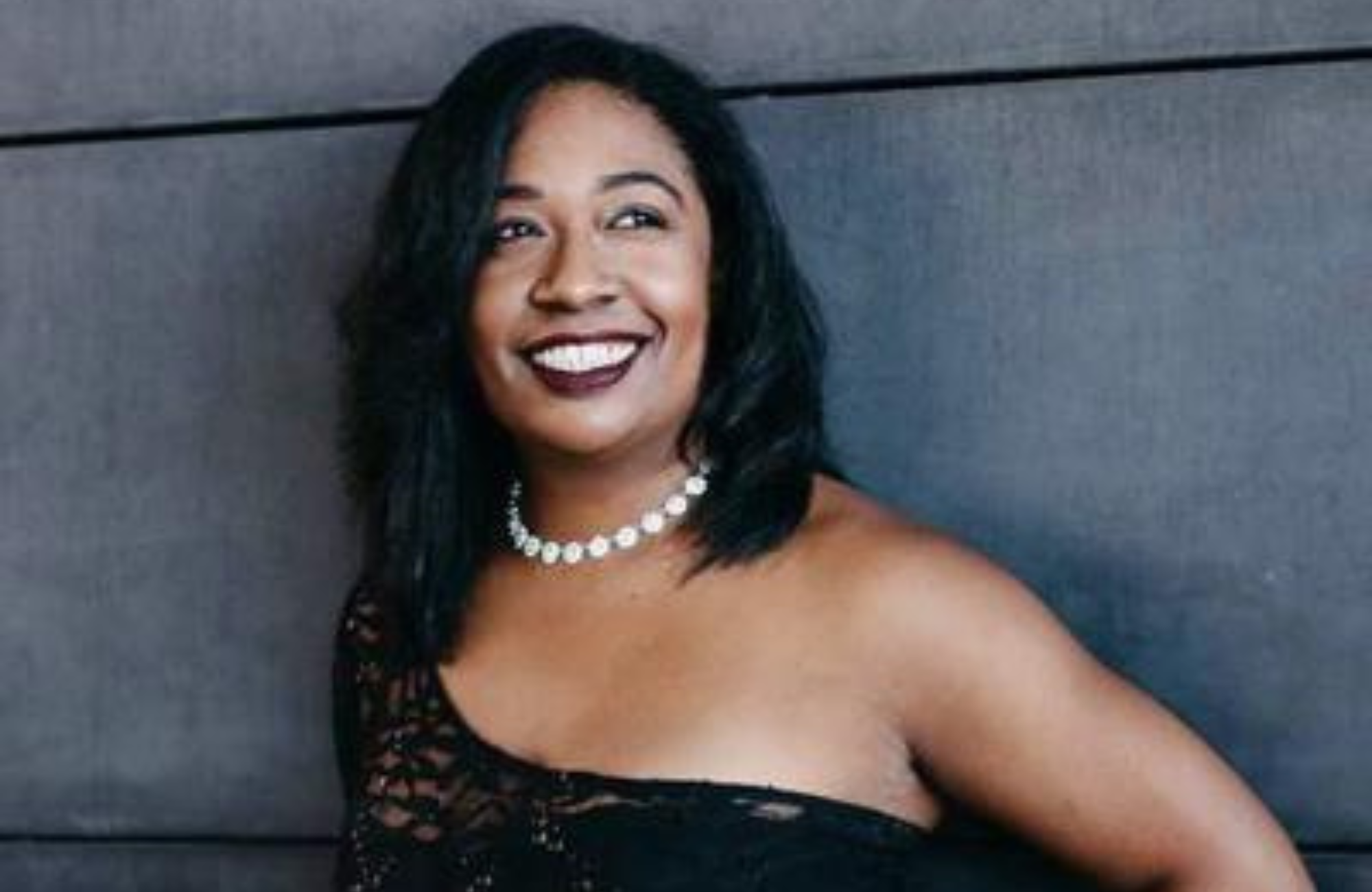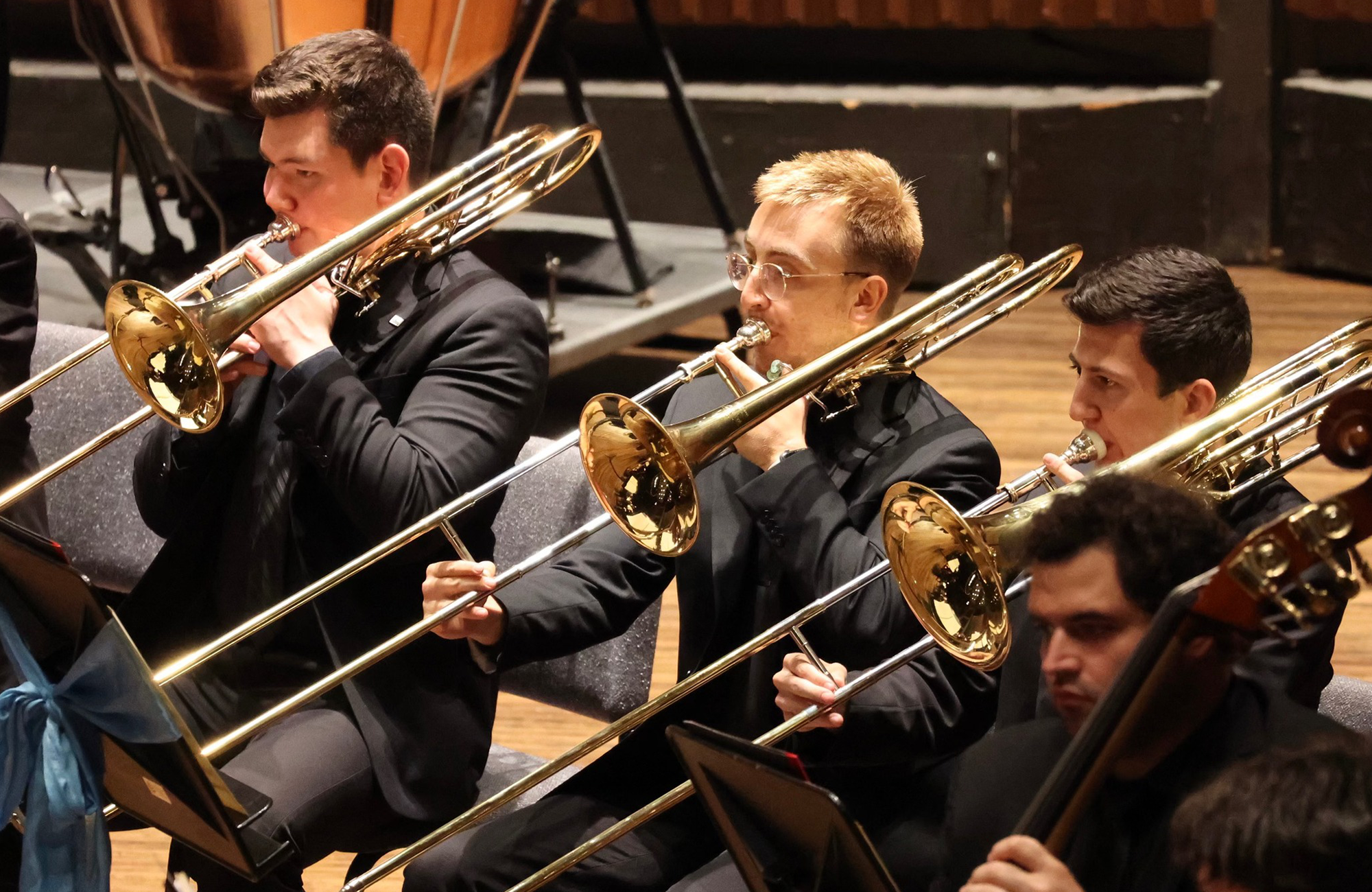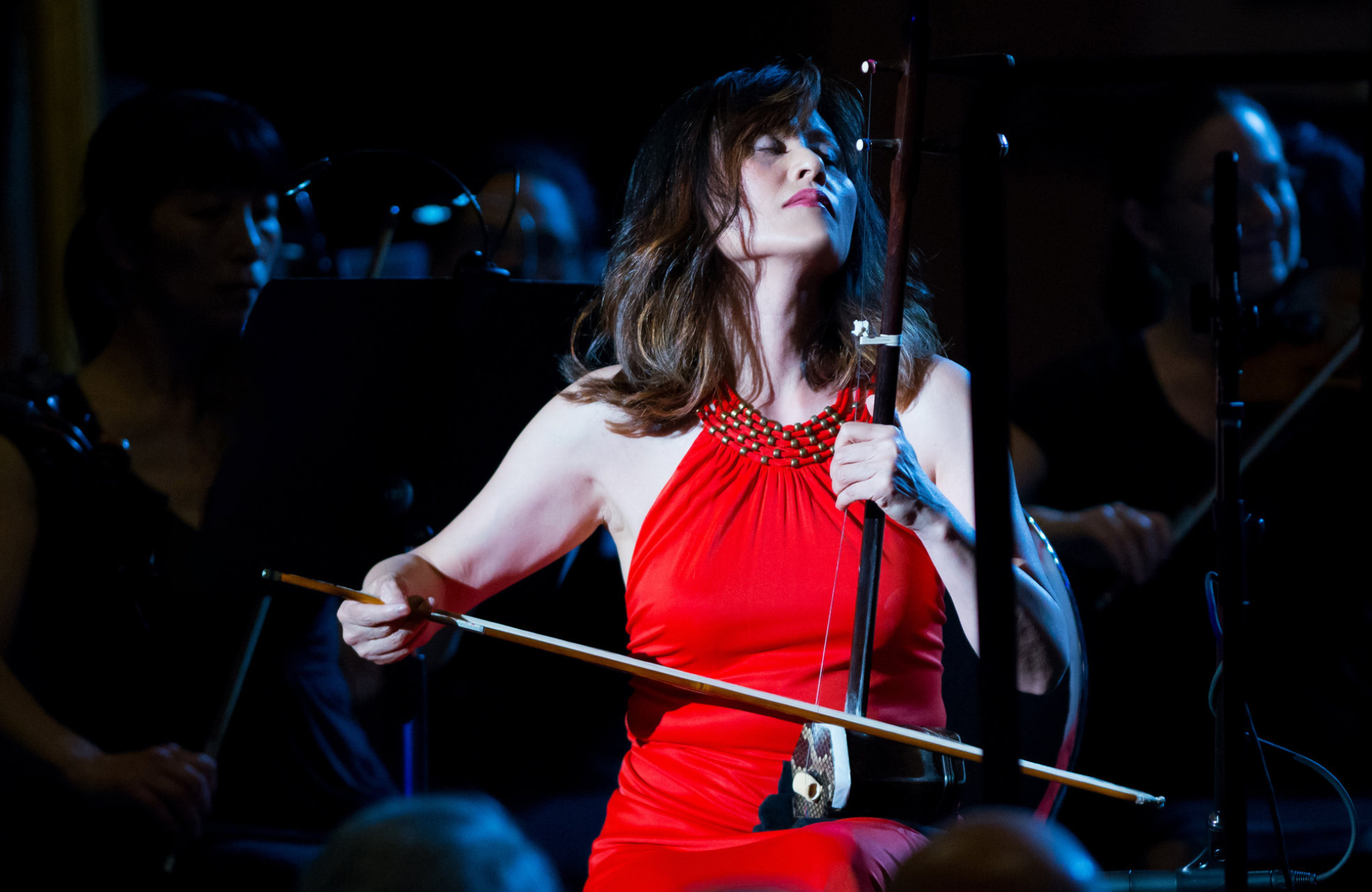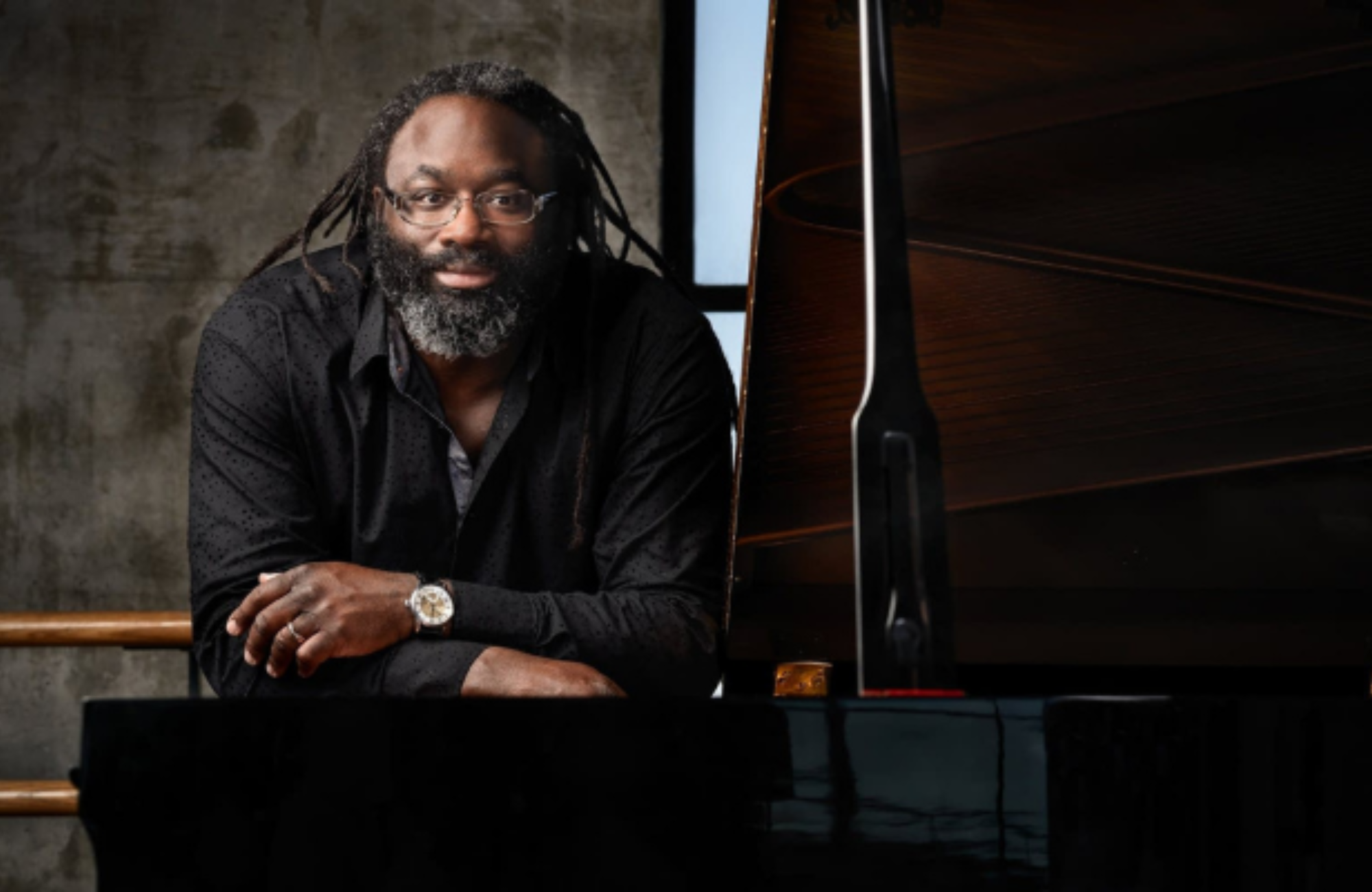A spectacular season opener begins featuring the The Syracuse Orchestra wind section in The Lovely Sirens, written by Stacy Garrop in 2010. Michelle Cann returns to the stage to play Beethoven’s fifth and final piano concerto, “The Emperor”, and the concert closes with the popular Tchaikovsky’s Symphony No. 4, which he dedicated to his best friend.
Thanks to our generous sponsors!
Jim & Marilyn Seago
Click here for information about the Oncenter’s accessibility options.
PROGRAM
SMITH: Star Spangled Banner ![]()
GARROP: The Lovely Sirens
BEETHOVEN: Concerto, Piano, No.5, op.73, E-flat major (Emperor) ![]()
TCHAIKOVSKY: Symphony No. 4 ![]()
LARRY’S LISTENING RECOMMENDATIONS
PROGRAM NOTES
In Greek mythology, the Sirens were sea nymphs whose singing was so seductive that it lured ill-fated sailors onto the rocks near the islands where they lived. Their most famous symphonic representation is in “Sirènes,” the final movement of Claude Debussy’s Nocturnes (which we performed last year). This hypnotic music—“amid the waves silvered by the moonlight,” as the composer put it—represents the consummate beauty of their songs. Stacy Garrop (b. 1969) offers a very different perspective. In The Lovely Sirens (2009)—the central movement of her five-movement Mythology Symphony—she emphasizes their danger ...
In Greek mythology, the Sirens were sea nymphs whose singing was so seductive that it lured ill-fated sailors onto the rocks near the islands where they lived. Their most famous symphonic representation is in “Sirènes,” the final movement of Claude Debussy’s Nocturnes (which we performed last year). This hypnotic music—“amid the waves silvered by the moonlight,” as the composer put it—represents the consummate beauty of their songs. Stacy Garrop (b. 1969) offers a very different perspective. In The Lovely Sirens (2009)—the central movement of her five-movement Mythology Symphony—she emphasizes their danger and heightens our terror. True, as in the Debussy, there’s a vivid timbral imagination here, as you’d expect from an admirer of composer George Crumb. But Stacy is also drawn to the formal techniques of Shostakovich, and you can feel it powerfully in the way she plays with musical tension.
“The Lovely Sirens,” Stacy explains, “presents three ideas: the Sirens’ beautiful song” (calls on the woodwinds, echoing each other, with strings and percussion in the background); “an unfortunate group of sailors whose course takes them near the island” (slightly ominous music in brass and bassoons); “and the disaster that befalls the sailors. Right off the bat, you hear the sirens and the sailors. You have them interacting a bit, and then it calms down”—reaching what Stacy calls “the zero point” of the movement. Here, just a few instruments playing quietly, represent—as the score tells us—“the mesmerized sailors turn[ing] toward the island.” Then, from the depths of the orchestra, we hear the stirring of danger introduced by brake drums. “From there to the end of the piece,” says Stacy, “it’s just getting bigger and bigger and bigger, with the sailors’ peril represented by the Morse code S.O.S. signal (three dots, three dashes, and three dots—represented musically by short and long rhythms). That S.O.S. signal starts in the percussion and then gets picked up throughout the orchestra; by the end, the entire orchestra is screaming this signal to warn the sailors, ‘Wait! Don’t!’ But they move their ship towards the rocks and don’t see what’s about to happen.”
The work ends at its point of highest tension. If you hear it in the context of the entire Mythology Symphony (which I strongly recommend—I’ve provided a link at the end of these notes), that tension is released in the remaining movements. At tonight’s concert, it’s resolved in our closer—the Symphony No. 4 (1887-88) by Peter Ilyich Tchaikovsky (1840-1893). Talk about tension: The Fourth features one of the most high-stress openings in the repertoire, announcing what’s generally called the symphony’s “fate motif”; and in its impact (described as “bold and terrifying” by conductor Larry Loh), it may well remind you of the ending of The Lovely Sirens. Granted, Tchaikovsky’s work is not explicitly referential—that is, it doesn’t have an official program. But in private correspondence with his patron Nadezhda von Meck—his financial supporter and closest confidante, although she insisted that they never meet in person—he suggested that the work represented a struggle against fate. And over the years, for reasons that become obvious once you’ve heard the piece, listeners have come to interpret the Fourth in those terms.
While any claim that the Fourth is autobiographical would be debatable, there’s no doubt that the symphony was written under the shadow of acute personal upheaval. Tchaikovsky’s problems centered on Antonia Miliukova, a former student who developed an overwhelming crush on her teacher. Although Tchaikovsky was gay, he agreed to marry her; when the relationship crashed, it left Tchaikovsky in a despair so deep that for a while he couldn’t compose. It was, to a large extent, his epistolary friendship with von Meck that lifted him from his anguish and allowed him to compose the Fourth, which he dedicated to her.
It’s not hard to hear the agony that fuels the symphony. The first movement, the longest of the four, is as intense as anything Tchaikovsky wrote. Although it’s written in 9/8, Larry hears it as a “macabre waltz crippled by dissonances and syncopations that provide rhythmic and harmonic tension.” The middle two movements, lighter in spirit, provide what he calls a “necessary relief,” but you can sense a certain despondency in the second and, perhaps, a trace of desperation behind the balletic third, marked by its reliance on pizzicato strings. As for the finale: it starts with a bang (literally), quickly moving on to the folk tune “In the Field Stood a Birch Tree,” which—in a variety of guises—serves as the thematic meat of the movement. About two-thirds of the way through, the fate motif from the first movement returns—but it is swept away by an exuberant close. Does this folksy spirit represent an escape—or is it simply a kind of manic denial? “You don’t know how he’s really feeling,” Larry points out. But there’s no doubt that the finale blows you away.
Serving as a buffer between these two high-tension works is the 1809 Piano Concerto No. 5 in E-Flat by Ludwig van Beethoven (1770–1827), universally known as the “Emperor” Concerto. It might seem strange for something by Beethoven to function in this way. After all, in the public imagination, isn’t Beethoven often pictured as the epitome of tension—“furious with his hair flying everywhere,” as tonight’s soloist Michelle Cann puts it? And wasn’t the Fifth Concerto written under the pressure of overwhelming circumstances, just as Tchaikovsky’s Fourth was? Indeed, one can argue that Beethoven’s circumstances were even more fraught. The work was composed during a tumultuous period in a war-torn Vienna that had just been captured by Napoleon—the man whom, when he declared himself emperor, Beethoven angrily removed as the dedicatee of the “Eroica” Symphony. (Needless to say, the concerto’s nickname does not originate with Beethoven himself!) This political trauma was combined with physical trauma. Beethoven’s deafness, hardly helped by the bombardment of his city, had proceeded so far that he couldn’t perform the work at its premiere.
And yet, despite this background—and even though it is the grandest of Beethoven’s piano concertos, and the one most influential on the Romantic composers who followed him—the Fifth Concerto eschews the grim tension that we find in its companions on tonight’s concert. As Michelle puts it, “This is a completely different side of Beethoven, so bright and happy. E-flat major is such a sunny key, full of light, optimism, and hope. Except in a few brief moments, darkness doesn’t really make an appearance. You’re going to smile throughout it.”
What should we be listening for? Beethoven was, says Michelle, “always innovative and ahead of his time”—and the work is full of surprises. Two of them—which launch the first and last movements—can stand for many.
Normally, concertos of the time begin with a “big orchestral tutti which introduces the themes” and which paves the way for the arrival of the soloist. This one begins with the orchestra playing just a simple E-flat Major chord—“then here comes the piano with an amazing cadenza.” That opening gesture—orchestral chord, followed by keyboard acrobatics—is repeated twice more before the movement proper begins. “It’s kind of wonderful that the pianist gets to bring the audience into what is going to unfold instead of having the orchestra do so with the piano sitting there waiting its turn.”
Similarly surprising is the move, without a break, into the finale: “It’s a very odd transition,” Michelle points out. Without any preparation, the orchestra drops a half step, a brief moment of vertigo that brings us to a new key and a new musical landscape, a buoyant rondo in Beethoven’s wittiest style. “What a fun ending!”
Yet the Concerto has sublimity as well as sunshine in the “transcendent” second movement. “Once the piano comes in,” says Michelle, “the orchestra is just pizzicato, and the pianist’s right hand gets to be a great singer, a wonderful soprano vocalist. It just floats.”
The “Emperor” Concerto is at or near the top of virtually every list of the most beloved piano concertos—and there’s a hazard in that popularity. After all, as Michelle reminds us, “A pianist can play a piece so many times they know it backwards and forwards, and get stuck in their ways.” Tonight’s performance, though, will not fall into routine. Although Michelle has known this concerto since her teenage years, she’s actually performed it very rarely, so she’s not coming to Syracuse with a rigid pre-conception of how it should go. “I know it well, but it still has a freshness to it. When I go to work with Larry in Syracuse, I’ll still be very open.” One quality of the performance, though, is predictable: However its details turn out, you can rest assured that, like all of Michelle’s performances, it will be an unforgettable experience.
Peter J. Rabinowitz
Have any comments or questions? Please write to me at prabinowitz@SyracuseOrchestra.org
NOTE: You can hear Stacy Garrop’s complete Mythology Symphony HERE
(https://www.garrop.com/Catalog/
Featured_Works/Mythology_Symphony/)
FEATURED ARTISTS

Described as bringing an “artisan storyteller’s sensitivity… shaping passages with clarity and power via beautifully sculpted dynamics… revealing orchestral character not seen or heard before” (Arts Knoxville) Lawrence Loh enjoys a dynamic career as a conductor of orchestras all over the world.
After an extensive two ...
Described as bringing an “artisan storyteller’s sensitivity… shaping passages with clarity and power via beautifully sculpted dynamics… revealing orchestral character not seen or heard before” (Arts Knoxville) Lawrence Loh enjoys a dynamic career as a conductor of orchestras all over the world.
After an extensive two year search, Lawrence Loh was recently named Music Director of the Waco Symphony Orchestra beginning in the Spring of 2024. Since 2015, he has served as Music Director of The Syracuse Orchestra (formerly called Symphoria), the successor to the Syracuse Symphony Orchestra. “The connection between the organization and its audience is one of the qualities that’s come to define Syracuse’s symphony as it wraps up its 10th season, a milestone that might have seemed impossible at the beginning,” (Syracuse.com) The Syracuse Orchestra and Lawrence Loh show that it is possible to create a “new, more sustainable artistic institution from the ground up.”
Appointed Assistant Conductor of the Pittsburgh Symphony in 2005, Mr Loh was quickly promoted to Associate and Resident Conductor within the first three years of working with the PSO. Always a favorite among Pittsburgh audiences, Loh returns frequently to his adopted city to conduct the PSO in a variety of concerts. Mr. Loh previously served as Music Director of the West Virginia Symphony Orchestra, Music Director of the Northeastern Pennsylvania Philharmonic, Artistic Director and Principal Conductor of the Syracuse Opera, Music Director of the Pittsburgh Youth Symphony Orchestra, Associate Conductor of the Dallas Symphony Orchestra, Associate Conductor of the Colorado Symphony Orchestra and Music Director of the Denver Young Artists Orchestra.
Mr. Loh’s recent guest conducting engagements include the San Francisco Symphony, Dallas Symphony, North Carolina Symphony, Baltimore Symphony, Sarasota Orchestra, Florida Orchestra, Pensacola Symphony, Atlanta Symphony, National Symphony, Detroit Symphony, San Diego Symphony, Seattle Symphony, National Symphony (D.C.), Utah Symphony, Rochester Philharmonic, Indianapolis Symphony, Calgary Philharmonic, Buffalo Philharmonic, Albany Symphony and the Cathedral Choral Society at the Washington National Cathedral. His summer appearances include the festivals of Grant Park, Boston University Tanglewood Institute, Tanglewood with the Boston Pops, Chautauqua, Sun Valley, Shippensburg, Bravo Vail Valley, the Kinhaven Music School and the Performing Arts Institute (PA).
As a self-described “Star Wars geek” and film music enthusiast, Loh has conducted numerous sold-out John Williams and film music tribute concerts. Part of his appeal is his ability to serve as both host and conductor. “It is his enthusiasm for Williams’ music and the films for which it was written that is Loh’s great strength in this program. A fan’s enthusiasm drives his performances in broad strokes and details and fills his speaking to the audience with irresistible appeal. He used no cue cards. One felt he could speak at filibuster length on Williams’ music.” (Pittsburgh Tribune)
Mr Loh has assisted John Williams on multiple occasions and has worked with a wide range of pops artists from Chris Botti and Ann Hampton Callaway to Jason Alexander and Idina Menzel. As one of the most requested conductors for conducting Films in Concert, Loh has led Black Panther, Star Wars (Episodes 4-6), Jaws, Nightmare Before Christmas, Jurassic Park, Casablanca, The Wizard of Oz and Singin’ in the Rain, among other film productions.
Lawrence Loh received his Artist Diploma in Orchestral Conducting from Yale, his Masters in Choral Conducting from Indiana University and his Bachelor of Arts from the University of Rochester. Lawrence Loh was born in southern California of Korean parentage and raised in Carlisle, Pennsylvania. He and his wife Jennifer have a son, Charlie, and a daughter, Hilary. Follow him on instagram @conductorlarryloh or Facebook at @lawrencelohconductor or visit his website, www.lawrenceloh.com

Lauded as “exquisite” by The Philadelphia Inquirer and “a pianist of sterling artistry” by Gramophone, Michelle Cann has become one of the most sought-after pianists of her generation. She made her debut with The Philadelphia Orchestra in 2021 and has recently performed concertos with The Cleveland ...
Lauded as “exquisite” by The Philadelphia Inquirer and “a pianist of sterling artistry” by Gramophone, Michelle Cann has become one of the most sought-after pianists of her generation. She made her debut with The Philadelphia Orchestra in 2021 and has recently performed concertos with The Cleveland Orchestra, the National Symphony Orchestra, the Orquestra Sinfônica Municipal de São Paulo, the Los Angeles Philharmonic, and the symphony orchestras of Atlanta, Baltimore, and Cincinnati.
Highlights of Cann’s 2023-24 season include appearances with the Charlotte, Hawaii, Indianapolis, Québec, Sarasota, and Winnipeg symphony orchestras, and recitals in New York City, Portland, Berkeley, Beverly Hills, and Denver. She also has teaching and performance residencies at the University of Indiana South Bend and Meany Center for the Performing Arts at the University of Washington.
Recognized as a leading interpreter of the piano music of Florence Price, Cann performed the New York City premiere of Price’s Piano Concerto in One Movement with The Dream Unfinished Orchestra in July 2016 and the Philadelphia premiere with The Philadelphia Orchestra and Music Director Yannick Nézet-Séguin in February 2021. Her recording of the concerto with the New York Youth Symphony won a Grammy Award in2023 for Best Orchestral Performance. Her acclaimed debut solo album Revival, featuring music by Price and Margaret Bonds, was released in May 2023 on the Curtis Studio label. She has also recorded two Price piano quintets with the Catalyst Quartet.
Cann was the recipient of the 2022 Sphinx Medal of Excellence, the highest honor bestowed by the Sphinx Organization. She also received the Cleveland Institute of Music’s 2022 Alumni Achievement Award and the 2022 Andrew Wolf Chamber Music Award.
A celebrated chamber musician, Cann has collaborated with leading artists including the Catalyst, Dover, and Juilliard string quartets, violinists Timothy and Nikki Chooi, and cellist Thomas Mesa. She has appeared as co-host and collaborative pianist with NPR’s From The Top, collaborating with actor/conductor Damon Gupton, violinist Leila Josefowicz, and violinist and MacArthur Fellow Vijay Gupta. Cann’s numerous media appearances include PBS Great Performances’ Now Hear This hosted by Scott Yoo and Living the Classical Life with host Zsolt Bognár.
Embracing a dual role as performer and pedagogue, Cann is frequently invited to teach master classes, give lecture-demonstrations, and lead teaching residencies. Recent residencies include the Gilmore International Keyboard Festival and the National Conference of the Music Teachers National Association. She has recorded lessons for tonebase, the popular piano lesson platform. She has also served on the juries of the Cleveland International Piano Competition, the Kauffman Music Center International Youth Piano Competition, and the piano competition of the Music Academy of the West.
A staunch believer in community-building through music, Cann has served as the director of two children’s choruses in the El Sistema-inspired program Play On Philly and was part of the inaugural class of ArtistYear fellows at the Curtis Institute of Music. Through ArtistYear, she worked with community partners City Year, Teach for America, and AmeriCorps to provide arts education and access to underserved communities in Philadelphia.
Cann holds bachelor’s and master’s degrees in piano performance from the Cleveland Institute of Music, where she studied with Paul Schenly and Dr. Daniel Shapiro, and an Artist’s Diploma from the Curtis Institute of Music, where she studied with Robert McDonald. She joined the Curtis piano faculty in 2020 as the inaugural Eleanor Sokoloff Chair in Piano Studies. She joined the piano faculty of the Manhattan School of Music in 2023.
Follow Michelle Cann on Instagram: @michelleacann







